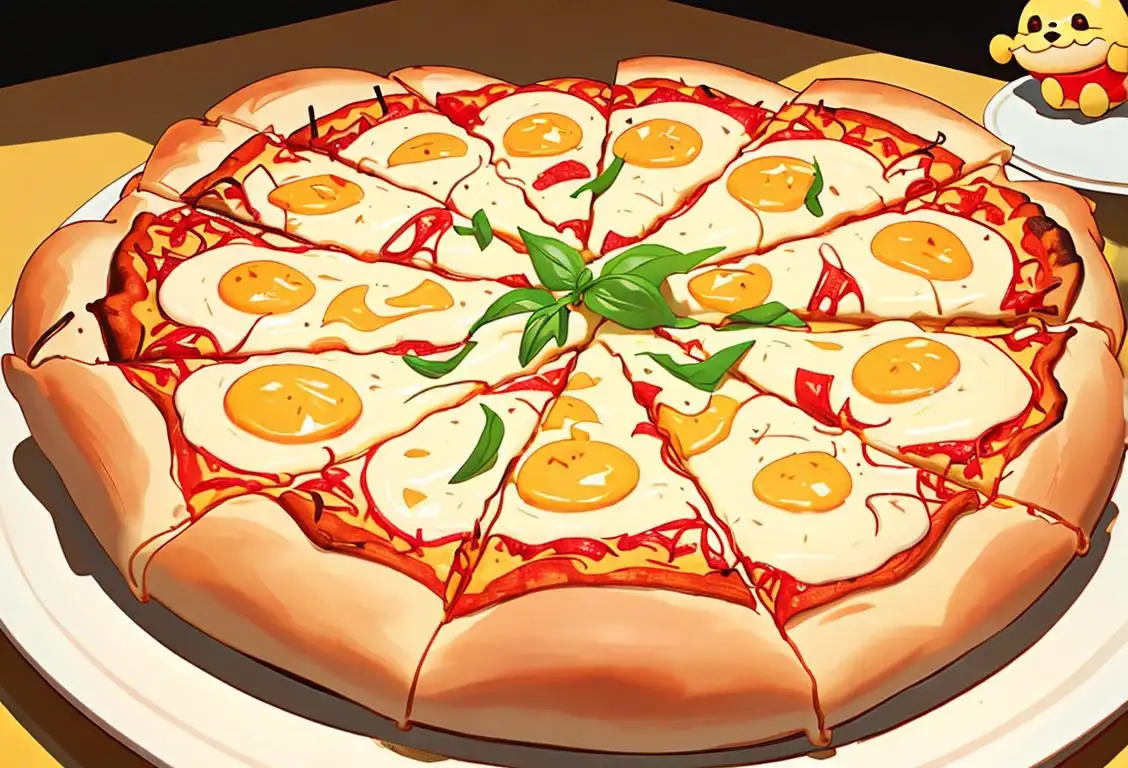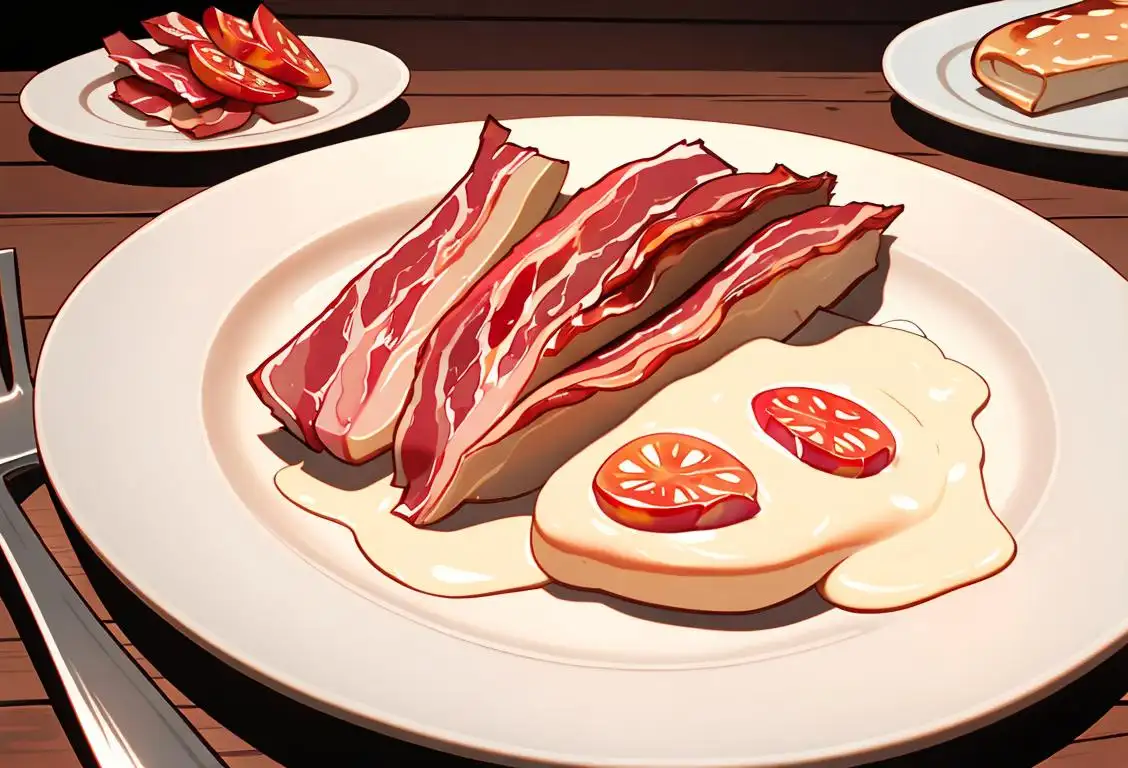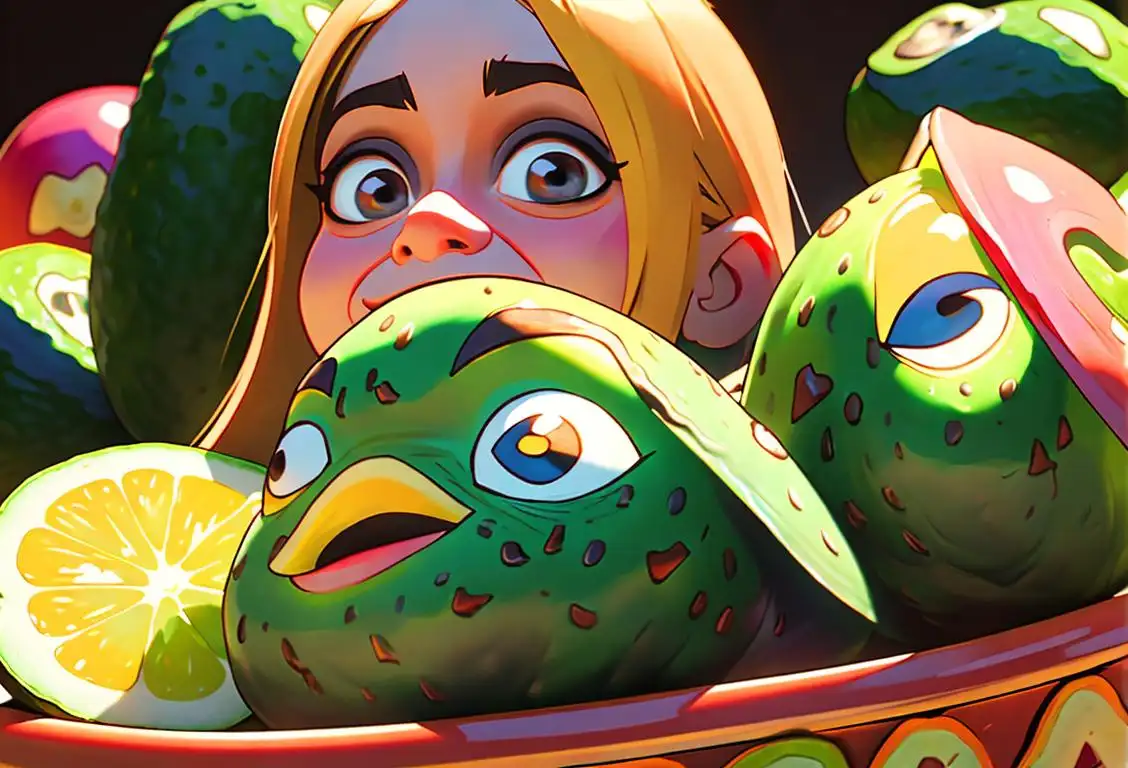National Granola Day

Welcome to the wacky world of granola! Grab your oats, nuts, and honey because it's time to celebrate National Granola Day. Whether you're a health-conscious fitness fanatic or just someone who loves a good crunchy snack, this day is all about honoring the beloved breakfast staple. So, put on your granola-inspired thinking caps and get ready for a whirlwind of deliciousness!
When is Granola Day?
It's national granola day on the 21st January.
A Brief History of Granola
Granola has a fascinating internet history that dates back to the early days of health food stores and hippie communes. It was first popularized in the 1960s as a nutritious and portable option for those seeking an alternative to traditional breakfast cereals.
The exact origins of granola are shrouded in mystery, but one popular theory is that it was invented by a charismatic health nut named Dr. James Caleb Jackson. He created a similar oat-based product called 'granula' in the 1860s, which laid the foundation for the granola we know and love today.
Fast forward to the modern era, and granola has become a beloved staple in pantries around the world. It's no longer just a breakfast cereal but also a versatile ingredient in everything from yogurt parfaits to energy bars.
How to Celebrate National Granola Day
There are countless ways to honor National Granola Day, so let's dive into some delicious ideas:
- Whip up a batch of homemade granola using your favorite combination of oats, nuts, seeds, dried fruit, and sweeteners. Get creative and add a dash of cinnamon or a sprinkle of shredded coconut for extra flavor!
- Enjoy a granola-themed breakfast with a bowl of yogurt topped with crunchy granola and fresh berries.
- Use granola as a versatile ingredient in recipes like granola bars, granola crumbles, or even granola-crusted chicken for a savory twist.
- Share the granola love by gifting a jar of homemade granola to your loved ones or hosting a granola-themed potluck with friends.
Did You Know?
Fun Fact: The world's largest granola bar weighed a whopping 1,098.4 kilograms (2,420 pounds)! It was created in 2012 by a group of granola enthusiasts in the United States. Imagine the size of the cereal box that would fit that monster bar!
History behind the term 'Granola'
1863
Invention of Granula
Granola's history can be traced back to 1863 when James Caleb Jackson, a vegetarian physician and nutritionist, invented a breakfast cereal called 'Granula'. Jackson's Granula was made by baking Graham flour dough, which was then crumbled into small pieces. It was considered a health food at the time and was intended to be eaten soaked in milk. However, Granula was not widely popular due to its hard texture and required soaking time.
1863
Invention of Graham bread
In 1863, Rev. Sylvester Graham, an American Presbyterian minister and dietary reformer, invented Graham bread. This bread was made from unrefined flour and emphasized the consumption of whole grains, which was a departure from the refined flour commonly used at the time. Graham bread became popular among health-conscious individuals.
1863
The Invention of Granula
The term 'granola' can be traced back to 1863 when Dr. James Caleb Jackson invented a breakfast cereal called 'granula'. It was made by baking graham flour into brittle sheets and then crumbling it into small pieces. Dr. Jackson marketed 'granula' as a whole grain health food, promoting it as a remedy for digestive issues and as a vegetarian alternative to meat-based breakfasts. However, the term 'granula' faced legal issues in 1881 when a similar product called 'granola' was introduced by John Harvey Kellogg, prompting Dr. Jackson to change the name of his product.
1863
The Invention of Granola
Granola was invented in 1863 by James Caleb Jackson, who called it 'granula'. It was originally a cereal made from whole grain flour, water, and baked into sheets. However, Jackson was soon sued by Dr. John Harvey Kellogg, who had invented a similar cereal and claimed that Jackson's name infringed on his trademark 'granula'. As a result, Jackson changed the name to 'granola' and the modern term was born.
1876
Creation of granola precursor
In 1876, Dr. James Caleb Jackson, a physician in Dansville, New York, created a cereal called 'granula.' Granula was made by baking and crumbling graham flour dough, which formed crunchy pieces. It was primarily consumed as a health food at sanitariums and health retreats.
1880
Reinvention by John Harvey Kellogg
In 1880, John Harvey Kellogg, a physician at the Battle Creek Sanitarium in Michigan, reinvented the concept of Granula and renamed it 'granola'. Kellogg made improvements to the recipe by toasting the cereal flakes instead of baking them, resulting in a more palatable and crunchy texture. He used a mixture of oats, wheat, cornmeal, and other grains, combined with honey for sweetness. Kellogg's granola became popular as a health food among his patients and was a key component of their vegetarian diet.
1889
Renaming to Granola
In 1889, Dr. James Caleb Jackson renamed his cereal from 'granula' to 'granola' due to the legal concerns surrounding the similar product introduced by John Harvey Kellogg. This new name still retained the essence of the original term but with a slight alteration, signifying the granular nature of the cereal. Therefore, the term 'granola' was coined, and it became the official name for this popular breakfast food.
1900
Granola's Rise in Popularity
Granola experienced a surge in popularity around the year 1900, thanks in part to the health food movement. Many health food advocates touted granola as a nutritious and energy-boosting option. The crunchy texture and convenient portability made it a favorite among hikers, campers, and outdoor enthusiasts.
1960s
Granola's Hippie Boom
During the 1960s, granola experienced a surge in popularity with the rise of the counterculture and the hippie movement. Granola was embraced by health-conscious individuals seeking natural and whole foods. It became synonymous with the notion of living a more organic and sustainable lifestyle. Many hippies even started making their own homemade granola recipes, emphasizing the use of organic ingredients and adding nuts, dried fruits, and spices to enhance its flavor.
1960s
Granola Goes Mainstream
In the 1960s, granola made its way into the mainstream as part of the counterculture movement. The natural, whole grain ingredients aligned with the values of the hippie movement, and granola became associated with a healthy and alternative lifestyle. It was often homemade and consumed alongside other natural foods like yogurt and fresh fruits.
1894
Invention of granola
The term 'granola' was first introduced in 1894 by John Harvey Kellogg, a physician and founder of the Battle Creek Sanitarium in Michigan. Kellogg developed a similar cereal to Jackson's granula but had to change the name due to legal disputes. He called his creation 'granola' instead. The popularity of granola grew in part due to its inclusion in Kellogg's sanitarium patient diets.
1960s
Rise in Popularity and Counterculture Movement
During the 1960s, granola experienced a surge in popularity due to its association with the counterculture movement. Consumption of granola, perceived as a natural and wholesome food, became a symbol of healthy living and sustainability. The term 'granola' started being used not just to refer to the breakfast cereal but also to describe people who were health-conscious, environmentally aware, and embraced alternative lifestyles. Granola became synonymous with a free-spirited culture, making its way into the mainstream and contributing to the term's cultural impact.
1970s
Commercialization and Mass Production
In the 1970s, granola transitioned from homemade hippie fare to a mainstream breakfast cereal. Several companies recognized its growing popularity and began producing and marketing commercial granola products. This shift led to a wide variety of granola options available in grocery stores, incorporating different flavors, textures, and ingredients to appeal to a broader consumer base. Granola bars, combining the convenience of a snack with the health benefits of granola, also gained significant popularity during this time.
1970s
Commercialization of Granola
During the 1970s, granola underwent commercialization and was mass-produced by various food companies. The popularity of granola skyrocketed as it became readily available in grocery stores. It was marketed as a nutritious and wholesome breakfast option, often paired with milk or yogurt. This contributed to granola becoming a household name worldwide.
1960s
Granola gains popularity as a health food
During the 1960s, granola gained widespread popularity as a health food. Its image as a natural and nutritious option appealed to the counterculture movement and the growing interest in natural foods. Granola became associated with the 'hippie' lifestyle and was often used as a symbol of alternative and healthy living.
1972
Granola Bars: A Convenient Snack
In 1972, the first commercially successful granola bar was introduced by Stanley Mason and Marvin Pomerantz. This innovation allowed people to enjoy granola on the go, making it a popular and convenient snack choice. Granola bars offered a nutritious alternative to traditional candy bars and became a staple in lunchboxes and backpacks. The introduction of granola bars further solidified the term 'granola' in popular culture, expanding its reach beyond breakfast cereal.
Present Day
Granola's Evolution and Versatility
Today, granola has evolved to include a wide range of flavors, ingredients, and variations. It is not just a breakfast cereal but also a popular snack, topping for yogurt and smoothie bowls, and ingredient in baked goods. The demand for healthier and natural food options continues to fuel the growth of the granola industry, and it remains a beloved and versatile food choice.
Present
Granola as a Versatile Healthy Snack
Today, granola remains a popular and versatile healthy snack. It is often consumed as a breakfast cereal, mixed with yogurt, or enjoyed on its own as a crunchy and nutritious snack. Granola has evolved to cater to various dietary preferences, with gluten-free, vegan, and nut-free options available. With its rich history and association with health and wellness, granola continues to be a staple in many households and an iconic part of the breakfast and snacking culture.
Today
Diverse Varieties and Health Consciousness
Today, the term 'granola' encompasses various forms of grain-based cereals, usually consisting of oats, nuts, dried fruits, and sweeteners like honey or maple syrup. Granola has evolved to accommodate different dietary preferences, with gluten-free, vegan, and organic options readily available. The term remains associated with health-conscious individuals and continues to symbolize a wholesome and nutritious food choice. Additionally, 'granola' has become a metaphorical term for someone who holds liberal, progressive, and environmentally friendly views.
1970s
Commercialization of granola
In the 1970s, granola started to become commercially available in supermarkets. Companies like Quaker Oats and General Mills began producing and marketing granola cereals, bars, and snacks. This marked a shift from granola being primarily made at home or purchased from health food stores to being a mainstream product.
Present
Granola as a versatile and popular food
Today, granola is enjoyed by people of varied dietary preferences and is considered a versatile food. It is commonly consumed as a breakfast cereal, added to yogurt or smoothie bowls, used as a topping for desserts, or enjoyed as a snack. Granola has evolved to include numerous flavor variations and can be found in both homemade and commercially produced forms.
Did you know?
The world's largest granola bar weighed a whopping 1,098.4 kilograms (2,420 pounds)!Tagged
food fun loved onesFirst identified
21st January 2016Most mentioned on
21st January 2016Total mentions
19Other days
Biscuit Day
Cheese Lovers Day
Cheese Pizza Day
Agriculture Day
Bacon Day
Medal Of Honor Day
Pumpkin Day
Foundation Day
Guac Day
Drink A Beer Day









